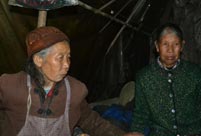

 |
| Scenery of cherry blossom is seen in southwest China's Yunnan Province. |
BEIJING, March 30-- Did Japan's hallowed cherry trees actually originate from South Korea?
"The beloved someiyoshino variety of cherry trees isn't really from Japan, but actually from South Korea's Jeju Island," reported a South Korean newspaper.
"Japanese cherry trees are actually Jeju's royal cherry trees. Japanese just took them and cultivated them," said the Daily Sports.
Dr. Takeshi Kinoshita, a Teikyo University professor who specializes in botany, questioned why South Korea made similar claims almost every year when the blossom came into bloom, the Japan Times reported.
The professor writes on his website that no scholars recognized someiyoshino trees originating on Jeju and this is apparently a distorted interpretation. He explains that someiyoshino trees are a species created by crossbreeding oshimazakura and edohigan cherry trees and oshimazakura aren't native to Jeju.
Meanwhile, a group in China has weighed into the debate, saying it was first found on Chinese soil.
He Zongru, chairman of the China Cherry Industry Association, said this fact has been recognized by a Japanese scholarly book, saying that cherry trees were first imported from the Himalayan Mountains in China during the Tang Dynasty (AD 618-907).
Zhang Zuoshuang, an official at the Botanical Society of China, was quoted as saying that among the 150 types of wildly-grown cherry blossoms around the world, more than 50 could be found in China.
Dr. Takeshi Kinoshita at the China Cherry Blossom Association said: "To put it simply, cherry blossoms originated in China and prospered in Japan. None of this is Korea's business."
 J-11 fighters in air exercise
J-11 fighters in air exercise Beauties dancing on the rings
Beauties dancing on the rings Attendants-to-be join Mr. & Miss Campus Contest
Attendants-to-be join Mr. & Miss Campus Contest Beijing's toughest anti-smoking law takes effect
Beijing's toughest anti-smoking law takes effect Family lives in cave for about 50 years in SW China
Family lives in cave for about 50 years in SW China PLA soldiers operating vehicle-mounted guns in drill
PLA soldiers operating vehicle-mounted guns in drill Blind carpenter in E China's Jiangxi
Blind carpenter in E China's Jiangxi China hosts overseas disaster relief exercise for the first time
China hosts overseas disaster relief exercise for the first time 20 pairs of twins who will become flight attendants in Sichuan
20 pairs of twins who will become flight attendants in Sichuan Obama is sowing discontent in S.China Sea
Obama is sowing discontent in S.China Sea Rescuers work through night to reach cruise ship survivors
Rescuers work through night to reach cruise ship survivors Driving through limbo
Driving through limbo Facing down MERS
Facing down MERSDay|Week